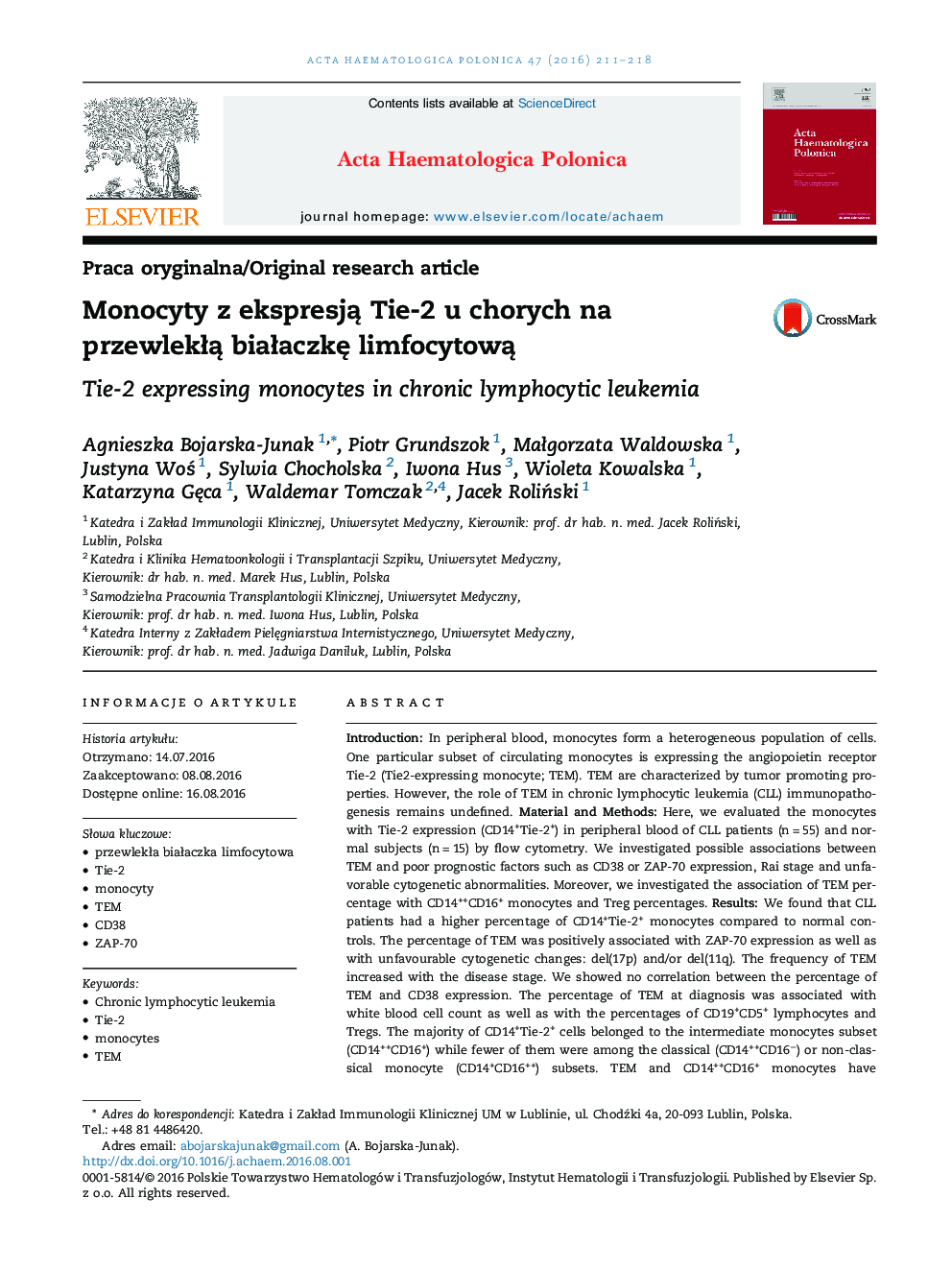| Article ID | Journal | Published Year | Pages | File Type |
|---|---|---|---|---|
| 3328051 | Acta Haematologica Polonica | 2016 | 8 Pages |
IntroductionIn peripheral blood, monocytes form a heterogeneous population of cells. One particular subset of circulating monocytes is expressing the angiopoietin receptor Tie-2 (Tie2-expressing monocyte; TEM). TEM are characterized by tumor promoting properties. However, the role of TEM in chronic lymphocytic leukemia (CLL) immunopathogenesis remains undefined.Material and MethodsHere, we evaluated the monocytes with Tie-2 expression (CD14+Tie-2+) in peripheral blood of CLL patients (n = 55) and normal subjects (n = 15) by flow cytometry. We investigated possible associations between TEM and poor prognostic factors such as CD38 or ZAP-70 expression, Rai stage and unfavorable cytogenetic abnormalities. Moreover, we investigated the association of TEM percentage with CD14++CD16+ monocytes and Treg percentages.ResultsWe found that CLL patients had a higher percentage of CD14+Tie-2+ monocytes compared to normal controls. The percentage of TEM was positively associated with ZAP-70 expression as well as with unfavourable cytogenetic changes: del(17p) and/or del(11q). The frequency of TEM increased with the disease stage. We showed no correlation between the percentage of TEM and CD38 expression. The percentage of TEM at diagnosis was associated with white blood cell count as well as with the percentages of CD19+CD5+ lymphocytes and Tregs. The majority of CD14+Tie-2+ cells belonged to the intermediate monocytes subset (CD14++CD16+) while fewer of them were among the classical (CD14++CD16−) or non-classical monocyte (CD14+CD16++) subsets. TEM and CD14++CD16+ monocytes have a proangiogenic activity, suppress T-cell activation and promote Treg expansion. The results suggest that monitoring of TEM number and function may provide useful information in determining disease activity.
